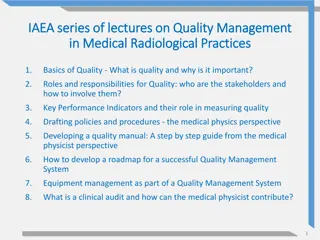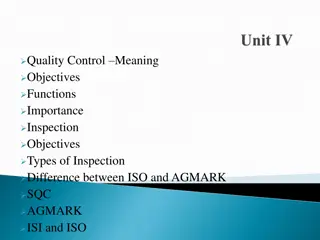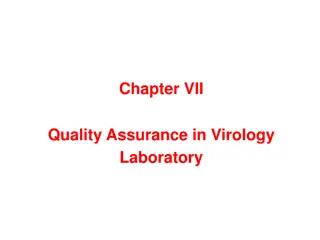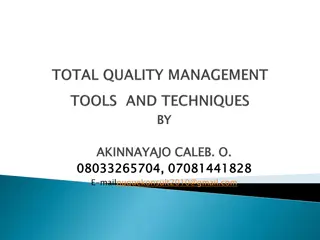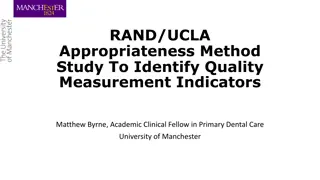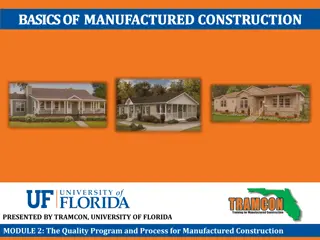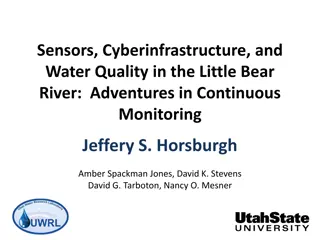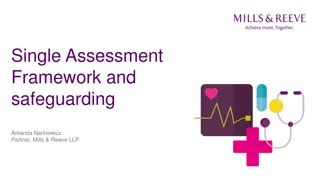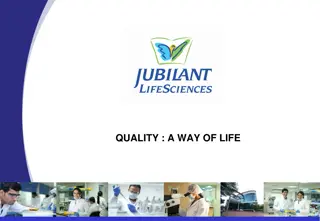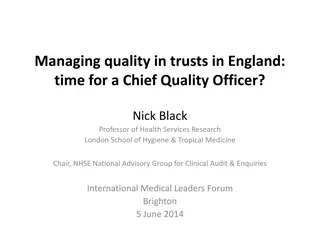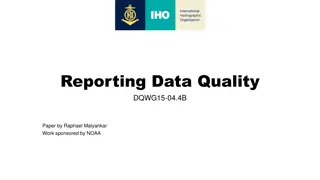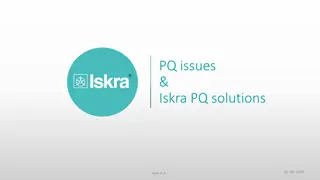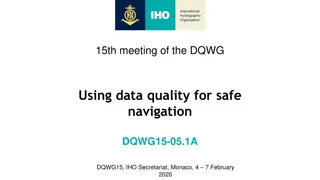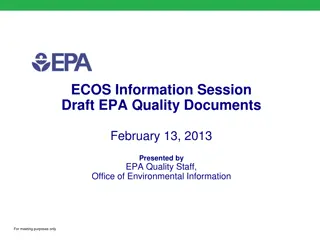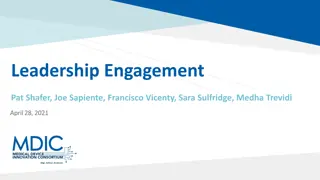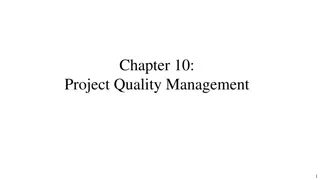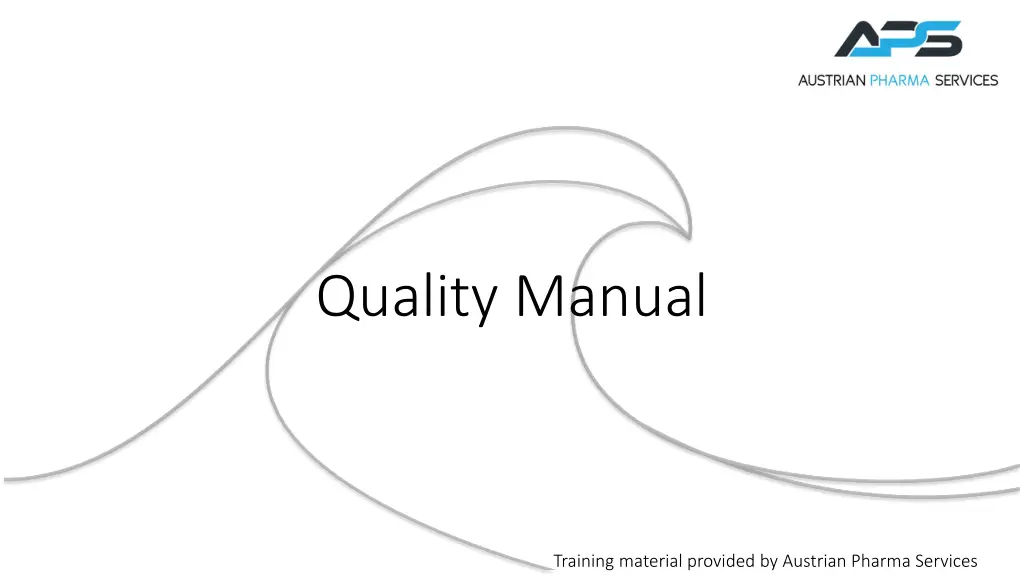
Quality Management System and ICH Q10 Implementation in Pharma Services
Explore the Quality Management System and ICH Q10 model for pharmaceutical organizations provided by Austrian Pharma Services. Learn about achieving product realization, maintaining control, and facilitating continual improvement to meet quality standards and regulations.
Download Presentation

Please find below an Image/Link to download the presentation.
The content on the website is provided AS IS for your information and personal use only. It may not be sold, licensed, or shared on other websites without obtaining consent from the author. If you encounter any issues during the download, it is possible that the publisher has removed the file from their server.
You are allowed to download the files provided on this website for personal or commercial use, subject to the condition that they are used lawfully. All files are the property of their respective owners.
The content on the website is provided AS IS for your information and personal use only. It may not be sold, licensed, or shared on other websites without obtaining consent from the author.
E N D
Presentation Transcript
Quality Manual Training material provided by Austrian Pharma Services
Quality Management Quality Manual describes the Quality Organization and Quality Management System (QMS) including management responsibilities associated with it Definition Quality management system (QMS) system for ensuring that products are consistently produced and controlled according to quality Standards/ Regulations/Directives (WHO, PIC/S, ICH Q10, 21-CFR Part 210/211 (US-FDA), EudraLex - Volume 4-Good Manufacturing Practice (GMP) guidelines (European Commission), etc.
ICH Q10 Model Implementation of the Q10 model should result in the achievement of three main objectives: Achieve product realization To establish, implement and maintain a system that allows the delivery of products with the quality attributes appropriate to meet the needs of patients, healthcare professionals, regulatory authorities (including compliance with approved regulatory filings), and other internal and external customers Establish and maintain a state of control To develop and use effective monitoring and control systems for process performance and product quality, thereby assuring continued suitability and capability of processes. Facilitate continual improvement To identify and implement appropriate product quality improvements, process improvements, variability reduction, innovations, and pharmaceutical quality system enhancements, thereby increasing the ability to fulfill quality needs consistently
ICH Q10 Model Two Enablers will facilitate the achievement such objectives by providing the means for science and risk-based decisions related to product quality: Knowledge management Product and process knowledge should be managed from development through the commercial life of the product up to and including product discontinuation. Knowledge management is a systematic approach to acquiring, analyzing, storing, and distribution information related to products, manufacturing processes, and components. Sources of knowledge include, but are not limited to prior knowledge (public domain or internally documented); pharmaceutical development studies; technology transfer activities; process validation studies over the product lifecycle; manufacturing experience; innovation; continual improvement; and change management activities. Quality risk management Quality risk management is integral to an effective pharmaceutical quality system. It can provide a proactive approach to identifying, scientifically evaluating, and controlling potential risks to quality. It facilitates continual improvement of process performance and product quality throughout the product lifecycle. ICH Q9 provides principles and examples of tools for quality risk management that can be applied to different aspects of pharmaceutical quality.
Quality Organization an independent function responsible for the development, implementation, and maintenance of the QMS responsible for Quality Assurance (QA), Quality Management (QM) and Quality Control (QC)
Governance Executive Committee (Leadership Team) C-level representative (Chief ) long-term planning and strategy for quality and compliance the quality plan and strategy for Quality Organization compliance with applicable laws, regulations, and corporate policies quality plan that includes review, approval, monitoring of implementation effectiveness Quality Steering Team highest-ranking Quality Leader, direct reports, quality functional managers communicating regulatory and QMS requirements throughout the organization updates to leaders and the Quality Organization on the effectiveness/changes required to the QMS
Governance Management review The continued suitability, adequacy, and effectiveness of the QMS is ensured through periodic reviews of the Quality Plan(s), key performance indicators (KPIs), and product quality consist of the following representatives Chief Executive Officer (CEO), Chief Financial Officer (CFO), Head of Manufacturing, Head of QM, and Head of Regulatory Affairs (RA) Management Review meetings by the Quality Organization on at least an annual basis to assess the ongoing suitability and adequacy of the QMS to identify risks and/or opportunities for continuous improvement
Documentation of the QMS Master Documents (MDs) basic description of the company quality concept Policies (POLs) description in general terms, of how specific GMP aspects (security, documentation, health, and responsibilities) will be implemented Instructions Standard Operation Procedure (SOP) Mandatory, approved description of a company-specific work process Working Instruction (WI) Written instruction describing the individual/specific steps of recurring operations Records, reports, plans, forms, checklists Documents for resulting activity
Fundamental Quality Systems and Processes Quality Risk Management (QRM) A QRM process is to be established to provide a proactive approach to identifying potential risks to the quality, safety, and effectiveness of products and processes. As part of the assessment, the quality risk assessment considers the severity and impact of the event. Results of risk assessments are implemented, as necessary, in quality plans or CAPAs. Data and records
Fundamental Quality Systems and Processes Events Change management
Fundamental Quality Systems and Processes Audits and Inspections Programme for auditing internal/external service providers/contractors and self-audits Escalation Event Management Of quality-related issues to the appropriate management level Assessment of the need for market action related to quality and compliance issues (recalls, withdrawals) Informing regulatory authorities of product quality and compliance issues, as required by applicable law
Fundamental Quality Systems and Processes Material management Procedures to control components used in manufacture/development of product To receive, process, store, control and release material throughout product life cycle To ensure that the product is approved and released by responsible person 3rd party management To control outsourced GxP activities and quality of purchased materials Process should include selection, evaluation, monitoring and control of 3rd parties and materials
Fundamental Quality Systems and Processes Computerized systems (CS) A system is in place that outlines the requirements for validation of computerized systems and lifecycle management of computerized systems regulated by GxP to ensure patient safety, product quality, and the integrity of regulated data. Continuous Improvement of Process Efficiency, Product Quality, and Quality Management System


